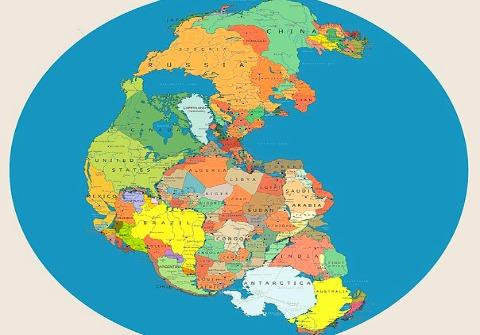
Anyone who has successfully completed elementary school (congratulations!) has likely been exposed to the idea that the earth’s tectonic plates are, well, a big deal. Earthquakes, tsunamis, mountain and volcano creation, land expansion and loss, and the 300-million-year shift from the single landmass of Pangea to the current configuration of land and ocean . . . all come from—you guessed it—tectonic plates! The earth is the only thing in the solar system with this type of surface-shifting tomfoolery, yet another marker of our intergalactic superiority.
But the actual mechanics of these movements—and how it all began—is still somewhat mysterious. And while it’s clear that massive forces and robust structures are at play, a new model posits that flimsy rock is the unsung hero.
Things we know:
1. Plates move over slowly the course of millions of years. Frequently, one plate will be forced under another, and sink down into the hyperactive mantle beneath (called subduction). But what the earth giveth, the earth also taketh away, so elsewhere new material is brought to the surface. This recycling contributes to a stable climate (contributing to atmosphere chemicals among other things), and creates rich materials necessary for life.
2. Plate movement had a discrete starting point, about 3 billion years ago, while the first subduction seems to have happened about 4 billion years ago.
So what’s with the 1-billion-year lag in movement from the subduction that should have kickstarted the whole thing? Enter the new model from researchers out of Yale and the University of Lyon in France. They observed on a micro scale that strong currents in the upper mantle shrink the grains within rocks, thus forming weak zones. This weakened rock eventually gets thrust back up to the surface to form new sections of plates. These more breakable plates more easily move under or over adjacent plates when the mantle forces do their thing.
So the lag? It’s the period of time when the originally subducted rocks were being slowly weakened and reincorporated back into the earth’s surface. By 3 billion years ago—like desperate runaways slowly worked on by craven pimps—the plates were all busted up and fragile enough to let the process really thrive.
Other researchers pointed out we’ll probably never know for certain how plate tectonics began (convenient for kooky academics everywhere), but the general reception is that the weak-ass rock theory seems plausible enough.
Image: commons.wikimedia.org.






